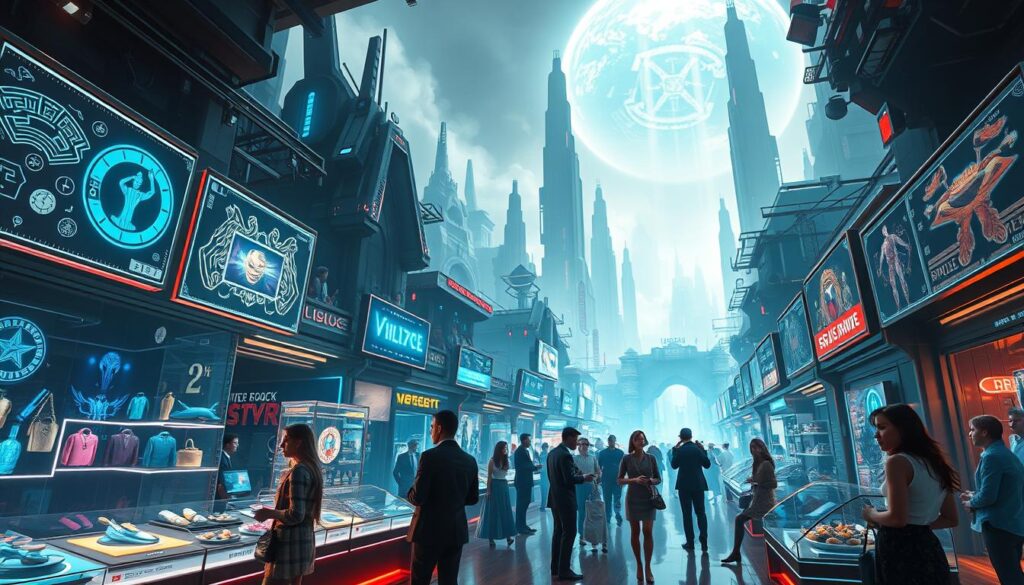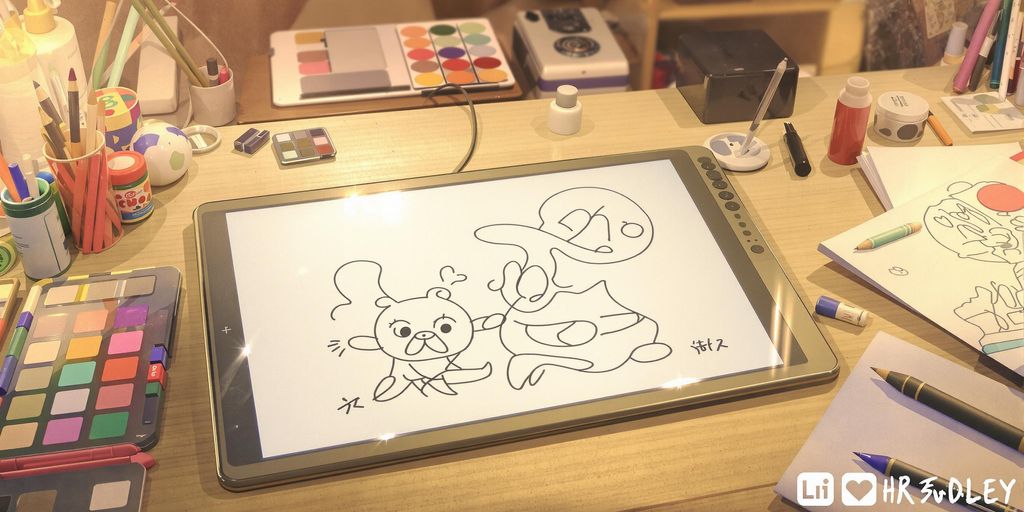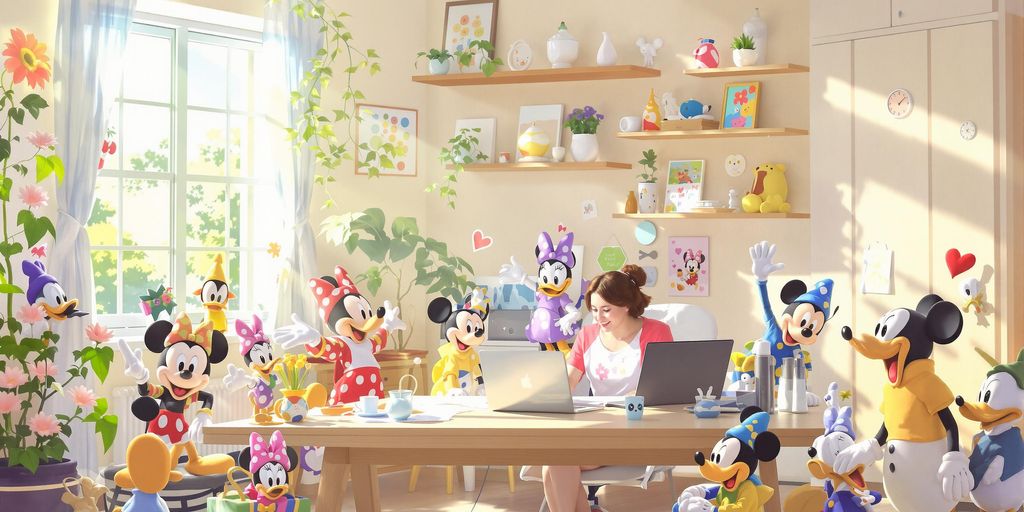What if your dream career doesn’t exist in the physical world? The metaverse isn’t just a buzzword—it’s a $105.4 billion industry growing tenfold by 2030. Virtual environments need skilled creators, and employers are scrambling to find talent who can shape immersive digital experiences. But how do you position yourself for these roles when the rules are still being written?
This guide breaks down the exact strategies to stand out in this competitive field. You’ll learn which technical skills matter most, how to showcase your work effectively, and why traditional resumes often fail in this space. For example, using optimized resume templates tailored for ATS systems can double your interview chances.
The metaverse demands more than coding expertise. Companies want designers who understand user behavior in 3D spaces and can collaborate across disciplines. We’ll show you how to highlight these hybrid abilities while avoiding common pitfalls during interviews.
Key Takeaways
- The metaverse market is projected to grow 800% by 2030, creating urgent demand for skilled designers
- Mastery of tools like Unity and Blender is essential, but soft skills like spatial storytelling separate top candidates
- AI-powered platforms like RoboApply can optimize resumes for metaverse-specific keyword tracking systems
- Portfolios must demonstrate interactive projects, not just static images or wireframes
- Networking in VR communities often leads to unadvertised job opportunities
Introduction to the Metaverse Job Landscape
The digital frontier is expanding faster than traditional career paths can adapt. By 2030, 25% of people will spend at least one hour daily in virtual worlds for work, shopping, or education. This shift creates urgent demand for architects of immersive spaces.
What Is the Metaverse?
Think of it as the internet’s 3D evolution. Unlike flat websites, these persistent digital environments let users interact through avatars using VR headsets or augmented reality glasses. Neal Stephenson’s 1992 novel “Snow Crash” first coined the term, but today’s version blends:
- Real-time 3D rendering
- Blockchain-based ownership systems
- Cross-platform interoperability
Platforms like Decentraland prove users will pay real money for virtual land – one parcel sold for $2.4 million in 2021. This economy needs designers who understand spatial storytelling and user behavior in depth-first environments.
Why Metaverse Design Is the Future
Traditional web design focuses on clicks. Here, you’re creating experiences. A recent industry report shows 78% of hiring managers prioritize candidates who can prototype interactive environments over static portfolio pieces.
“The best metaverse spaces feel inevitable, like they’ve always existed – that’s the designer’s magic.”
Salaries reflect this demand. Entry-level roles start at $82,000, with lead positions exceeding $160,000 at major tech firms. You’ll need hybrid skills in 3D modeling software, UI/UX principles, and basic blockchain concepts to compete.
Understanding the Metaverse and Its Expanding Opportunities
Virtual worlds are rewriting career playbooks across industries. While gaming drives early adoption, 63% of metaverse revenue now comes from non-gaming sectors. Luxury brand Dolce & Gabbana sold $5.7 million in digital wearables last year, proving virtual goods have real-world value.

Market Trends and Emerging Technologies
Three sectors dominate hiring for virtual space architects:
- Fashion: Gucci’s Roblox garden attracted 19 million visitors in 2 weeks
- Education: Stanford’s VR campus hosts quantum physics labs
- Real Estate: Virtual land sales hit $501 million in Q1 2024
Blockchain enables true digital ownership through NFTs, while AI tools like Midjourney accelerate 3D asset creation. Major platforms now prioritize interoperability – your avatar could soon carry items between Decentraland and Meta’s Horizon Worlds.
To capitalize on these opportunities, focus on transferable skills. Those who adapt traditional design skills to spatial computing principles often land roles fastest. Disney’s metaverse team recently hired theater set designers to build interactive story worlds.
The market rewards specialists who understand niche user behaviors. Can you design virtual dressing rooms that reduce returns for e-commerce brands? Create AR wayfinding systems for hospitals? These are the problems top companies want solved.
Crafting a Standout Resume for Metaverse Design Roles
Your resume is your first virtual handshake in this emerging field. Traditional formats often miss what hiring teams prioritize: technical precision and immersive storytelling. Start by mapping your experience to the industry’s unique demands – every line should answer “Can this person build engaging 3D worlds?”
Leveraging RoboApply's AI Resume and Cover Letter Builder
RoboApply’s AI tools transform generic applications into targeted assets. The platform’s resume builder analyzes job descriptions to emphasize skills like VR prototyping or Python scripting. It automatically formats your 3D modeling expertise in Blender or Maya as primary competencies, not footnotes.
ATS Optimization and Grammar Checking with RoboApply
Applicant tracking systems filter 75% of resumes before human review. RoboApply’s metaverse developer resume examples show how to structure content with keywords like “Unreal Engine optimization” or “multi-user environment design.” The grammar checker polishes technical jargon while preserving industry-specific terms recruiters expect.
Quantify achievements using metrics that matter: “Streamlined asset pipelines reduced project timelines by 30%” proves impact better than vague claims. Pair this with transferable skills from adjacent fields, like user engagement strategies or cross-platform collaboration.
Essential Skills Every Metaverse Designer Needs
The blueprint for success in virtual worlds demands both technical mastery and human-centric creativity. Employers seek candidates who can merge cutting-edge tools with intuitive storytelling – a rare hybrid that commands premium salaries.

Technical Proficiencies: VR, AR, 3D Modeling
Start with industry-standard software. Blender and Maya dominate 3D asset creation, while Unreal Engine 5 drives photorealistic environments. For blockchain integration, learn Solidity for smart contracts and NFT minting workflows.
Virtual reality development requires understanding spatial audio design and gesture controls. Master Oculus SDK and OpenXR frameworks. Augmented reality projects demand proficiency in Apple ARKit and Unity’s MARS platform.
- C# scripting for interactive object behaviors
- Python for AI-driven NPC customization
- Three.js for browser-based 3D experiences
Soft Skills and Creative Storytelling
Your code means nothing if users feel lost. Study spatial psychology – how lighting and scale influence behavior. Collaborate with UI developers to create seamless transitions between menus and environments.
Narrative design separates functional spaces from memorable worlds. Can your retail environment tell a brand’s story through architecture? Does your educational sim guide exploration through environmental clues?
“Great virtual spaces teach users how to interact with them through design – no instruction manuals needed.”
Build cross-functional empathy. Attend blockchain meetups to understand decentralized governance models. Shadow UX researchers analyzing avatar body language. These insights make you indispensable to development teams.
How to Land a Metaverse Designer Job in 2025
- Target specific roles: Choose between spatial UX design, 3D environment creation, or blockchain-integrated experiences
- Analyze company needs: Study job posts from Meta’s Reality Labs and Epic Games’ Unreal Engine team
- Gap assessment: Compare your current skills with required competencies like WebXR development
Platforms like Decentraland publish technical specifications for preferred contractors. Match your portfolio pieces to these requirements – create VR retail spaces if targeting e-commerce brands, or educational sims for edtech firms.
Certifications validate emerging skills. Complete Unity’s VR Development Professional Certificate or NVIDIA’s Omniverse training. These credentials appear in 68% of LinkedIn profiles for hired metaverse jobs according to 2024 recruitment data.
Build industry connections through:
- VR Chat meetups with platform developers
- Discord channels like Metaverse Builders Hub
- GitHub contributions to open-source projects
Adapt strategies from other tech fields using resources like cloud architect career strategies. Submit 5-7 tailored applications weekly, tracking responses in a spreadsheet. Prioritize roles solving problems you’ve addressed in past projects.
Building an Impressive Portfolio and Personal Brand

Your portfolio is your virtual storefront in the metaverse economy. Top employers spend 47 seconds evaluating candidates’ work samples – make yours unforgettable through strategic platform selection and storytelling.
Platform Power: Where to Showcase Work
ArtStation dominates for 3D environment specialists, with 82% of metaverse hiring managers actively scouting the platform. Behance shines for UX-focused designers demonstrating user flow diagrams. Both platforms let you:
- Organize projects into themed collections like “NFT Wearables” or “VR Concert Stages”
- Embed Unity WebGL builds for interactive previews
- Display technical breakdowns alongside final renders
One designer landed a Decentraland contract by showing before/after wireframes of a virtual gallery space. Their case study explained how spatial audio placement increased user dwell time by 40%.
“Treat every portfolio piece like a product launch – what problem does it solve? Who’s the audience? Why does it matter?”
Diversify your content types. Include 15-second demo reels showing avatar interactions, then link to full Unreal Engine files. For NFT projects, display smart contract details alongside 3D asset rotations.
Build cross-platform consistency. Use identical color schemes and bio text on ArtStation, LinkedIn, and Discord professional profiles. Join communities like The Metaverse Creators Guild to exchange feedback with peers.
Update quarterly with experimental work. Recent entries might include AI-assisted environment textures or physics-based clothing simulations. This shows you’re evolving with the platforms’ technical capabilities.
Navigating the Interview Process for Metaverse Design Positions
Interviews in this field test more than coding skills—they assess how you shape digital ecosystems. Employers evaluate your ability to merge technical precision with human-centered design across evolving platforms.
Mastering Two-Way Evaluation
Technical rounds often involve live coding in C#/C++. You might optimize avatar pathfinding algorithms or troubleshoot rendering bottlenecks in Unity. Use common metaverse interview questions to practice explaining blockchain integrations to non-technical stakeholders.
Creative challenges test spatial storytelling. You could design a virtual concert venue for 10,000 users or a puzzle-based training sim. Outline user personas first—how would children interact differently than corporate teams?
RoboApply’s interview coach sharpens responses through mock scenarios. Record yourself explaining 3D environment optimizations, then refine based on AI feedback about clarity and pacing.
Showcase problem-solving with specific examples:
- How you boosted VR frame rates by 25% through LOD adjustments
- Navigation systems you designed for crowded virtual worlds
- Cross-platform compatibility fixes for AR shopping experiences
Prepare interactive demos using tools like WebXR. A retail client? Show your virtual store prototype running smoothly on Meta Quest and desktop browsers. Reference portfolio presentation techniques that highlight technical depth.
Research the company’s active projects. If they’re building educational worlds, ask about their approach to accessibility in VR. For gaming roles, discuss scalability solutions for live events. Prove you understand their users’ unmet needs.
FAQ
What qualifications do I need for metaverse design roles?
Employers seek proficiency in 3D modeling tools like Blender or Maya, experience with VR platforms like Oculus, and knowledge of game engines like Unreal Engine. A portfolio demonstrating virtual environment design and familiarity with blockchain concepts (e.g., NFTs) strengthens applications.
How does blockchain technology impact metaverse design?
Blockchain enables verifiable ownership of digital assets through NFTs, critical for designing wearables in platforms like Decentraland. Designers must understand decentralized architecture principles when creating interoperable virtual spaces.
Can traditional game designers transition to metaverse careers?
Yes. Skills in 3D asset creation and interactive storytelling transfer directly. However, you’ll need to master VR/AR-specific tools like Unity XR and learn user behavior patterns in persistent virtual worlds.
What tools are essential for creating metaverse environments?
Core tools include Unreal Engine 5 for world-building, Substance Painter for textures, and VR headsets like Meta Quest Pro for testing. Familiarity with AI-assisted design plugins accelerates workflow.
How important are NFTs for metaverse fashion designers?
NFTs authenticate limited-edition digital apparel in markets like The Sandbox. Designers use platforms like CLO3D to create NFT-compatible 3D garments that users can trade across multiple virtual worlds.
Should I learn coding for metaverse design jobs?
While not mandatory, basic scripting in C# (for Unity) or Python helps customize interactions. Focus on visual scripting tools like Unreal Engine Blueprints for prototyping without deep coding knowledge.
How does RoboApply help with metaverse job applications?
RoboApply’s AI analyzes job descriptions from companies like Epic Games or Spatial, optimizing your resume with keywords like “spatial computing” and “avatar customization.” It ensures ATS compatibility while maintaining creative formatting for design roles.
What platforms host metaverse design job opportunities?
Major hubs include LinkedIn for corporate roles, CryptoJobs for Web3 positions, and Discord communities of platforms like Roblox. Attend virtual career fairs in AltspaceVR to network with industry leaders.


















